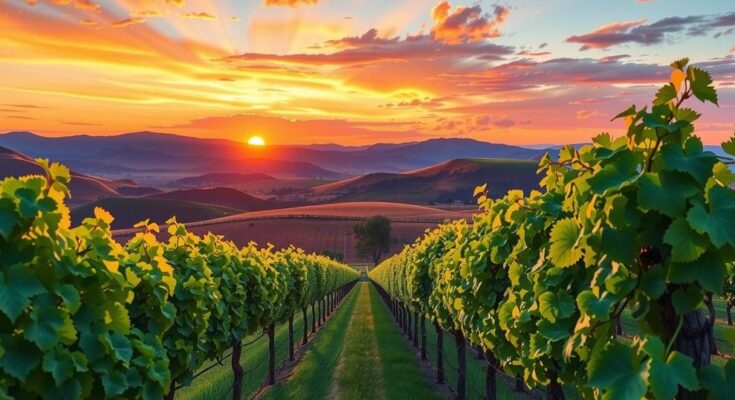Tarija, Bolivia’s wine country, is characterized by high-altitude vineyards, unique rituals honoring nature, and a burgeoning gastronomic culture. Despite its challenging terrain, local wineries produce remarkable wines, particularly pinot noir and Singani. Influential figures such as Steven Soderbergh acknowledge the region’s vibrant food and drink scene, making Tarija a hidden gem that rivals renowned wine regions.
In the Bolivian wine country, celebrated for its beauty and spirituality, visitors are welcomed into the unique culture of Tarija. As travelers receive guidance from experts like Orlando Condori, rituals such as pouring wine onto the earth in thanks to “Pachamama,” or Mother Earth, illustrate the spiritual connection of the region. Despite its elevation at 3,500 meters, around 11,000 feet, the area provides breathtaking vistas.
Tarija is a relatively small region, yet it boasts a stunning diversity of landscapes, including forests, deserts, and lakes. This agricultural area is known for its hidden, high-altitude wineries that rival those in Tuscany, while also serving as a testament to its enchantment. As explained by conservation ambassador Niki Barbery-Bleyleben, the local spiritual beliefs, rooted in Indigenous traditions, enhance the winemaking experience.
Winemaking in Tarija benefits from its high altitude, which is becoming a trendy characteristic among vintners today. Jurgen Kohlberg from Bodega Tayna emphasizes that altitude influences the unique qualities of their wines, particularly their acclaimed pinot noir. His vineyard exemplifies the challenges of high-altitude agriculture, with an unconventional terroir comprising only rocky substrate.
Despite the often adverse conditions for cultivation, such as insufficient soil, wineries like Campos de Solana thrive. General manager Luis Pablo Granier highlights that while Tarija’s latitude typically does not favor viticulture, the area’s altitude allows for successful wine production. This vineyard also crafts Singani, a spirit made from distilling wine, acknowledged for its unique attributes.
Filmmaker Steven Soderbergh has praised Singani for its exceptional character, sharing his positive experiences with it. He further commented on the sophisticated food and drink culture in Bolivia, dismissing any misconceptions about the nation as unsophisticated. As Bolivians gain recognition for their cuisine, an increasing focus on gastronomy accompanies the growing wine industry.
Dining experiences in Tarija showcase the region’s culinary prowess, with meals featuring locally sourced ingredients presented by chefs such as Pablo Cassab. Traditional Bolivian dishes paired with expertly crafted wines contribute to an enriching gastronomic journey.
Exploring Tarija’s unique offerings, visitors encounter culture and history intertwined with agriculture, even attracting astronaut Neil Armstrong’s admiration during his lunar voyage. The remarkable juxtaposition of captivating landscapes with rich historical narratives reaffirms Bolivia’s place as a destination rich in surprises, from its high-altitude vineyards to deeply-rooted traditions.
In conclusion, Bolivia’s Tarija province stands out as an extraordinary wine country renowned for its high-altitude vineyards, spiritual roots, and diverse gastronomy. Encapsulated by breathtaking scenery and mountainous terrain, Tarija showcases a unique blend of wine culture and heritage. The dedication of local winemakers and chefs further enhances the region’s appeal, drawing attention to Bolivia’s hidden gems and emphasizing its potential within the world of wine and cuisine.
Original Source: www.spokesman.com




